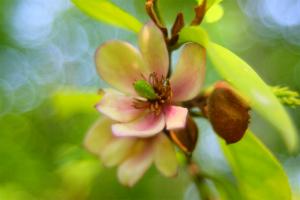1、 Curing method
1. Temperature: the temperature suitable for its development is between 18 ° C and 28 ° C, and the temperature for overwintering cannot be lower than 5 ° C. because it is not resistant to cold, when the temperature is lower than the limit temperature, there will be black rot of branches and leaves. After flowering, the temperature should be maintained at 16 ° C, which can prolong the flowering period, and too high curing temperature will reduce the flowering period

2. Watering: its branches, leaves and flowers are relatively large, and they need more water. During the growth period, they need to be watered every morning and evening. In winter, they need to control water. It's OK to water two or three trees once. When pouring, the amount should be controlled until the soil is completely wet

3. Fertilization: before planting, it is necessary to add base fertilizer to the soil, which consumes nutrients quickly. During the growth period, it is necessary to apply fertilizer once every half a month, and the diluted fertilizer cake water can be selected for fertilizer seeds. In order to prevent soil alkalization, 2% ferrous sulfate can be added to the fertilizer during fertilization, and potassium superphosphate solution can be added to the water before flowering, which can help the flowers color and make the flowers more bright

4. Light: it is not suitable for long-term maintenance in a sunny environment. It needs to be maintained in a cool place in summer, so as to prevent the branches and leaves from being burned. After September, the light will slowly weaken. At this time, it can be moved to a place with more light for breeding

2、 Breeding skills
1. Breeding: in April and may, select the top tender ears of Hydrangea as cuttings, insert them into the prepared fine soil sand bed, pour enough water, and put them in a dark environment with a temperature of about 25 degrees. They can grow roots in about 20 days

2. Pruning: whenever it is necessary to cut off the stumps and dead leaves at the base in March, only three or four buds can be left on each main branch

3、 Problem diagnosis
1. Insect pests: it is mainly infected with powdery mildew and leaf spot. After discovering this kind of disease, 65% of mancozeb wettable powder is mixed with water and sprayed for treatment

2. No flowering: if the plant does not bloom, it may be due to excessive nitrogen fertilizer. There is too little phosphorus and potassium fertilizer. We only need to reduce nitrogen fertilizer and increase phosphorus and potassium fertilizer to solve this problem

4、 Other issues
1. Whether it can be planted at home: its flowers are easy to cause allergies to people with sensitive physique. If someone at home is sensitive to pollen, it is not recommended to breed. If there are no allergic personnel, it can be bred

2. Toxicity: its pollen branches and leaves are not poisonous, but the juice is poisonous. Generally, there will be no problem as long as it is not picked. If the skin comes into contact accidentally, wash it with water diluted with soap first, and then see a doctor as soon as possible


 jackfruit
jackfruit snake plant
snake plant hibiscus
hibiscus hydrangea
hydrangea lavender
lavender Green roses climb al...
Green roses climb al... If you don't pay att...
If you don't pay att... Management of four g...
Management of four g...
































